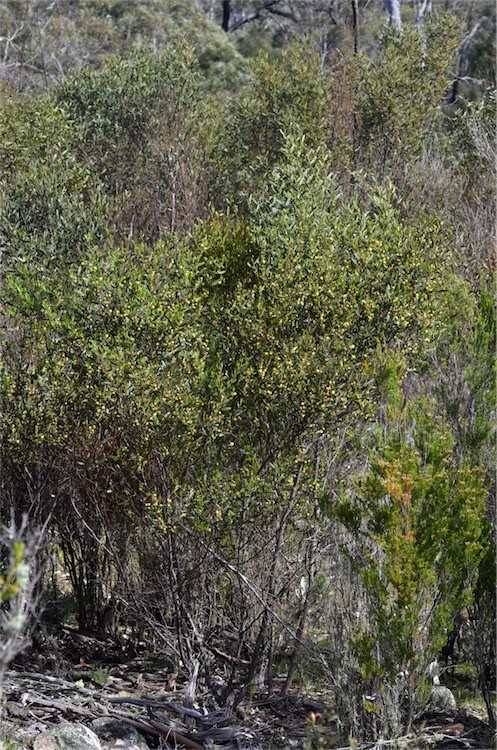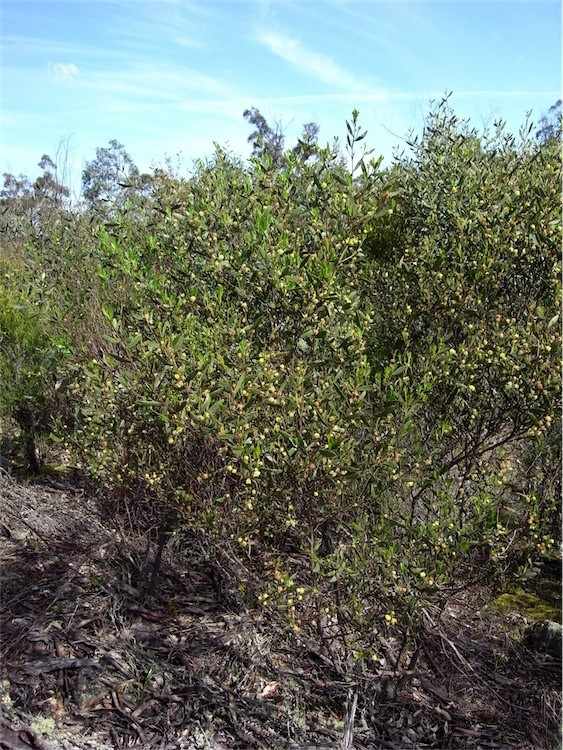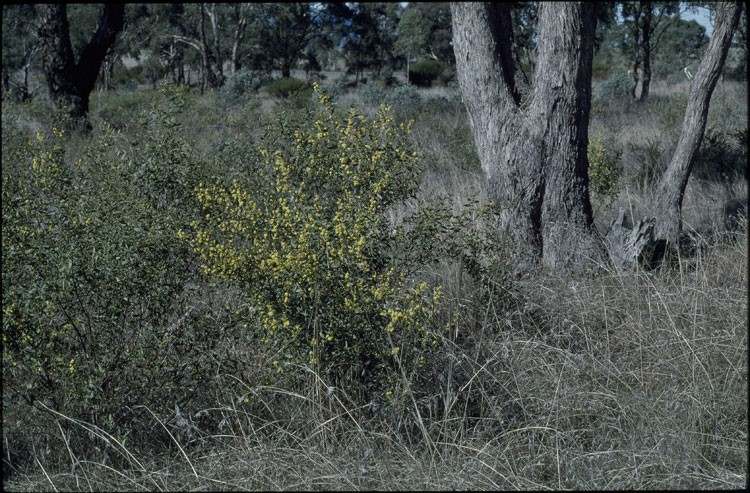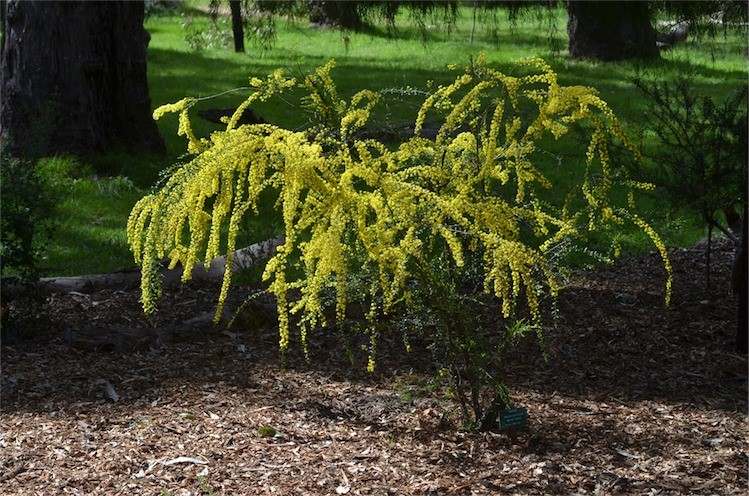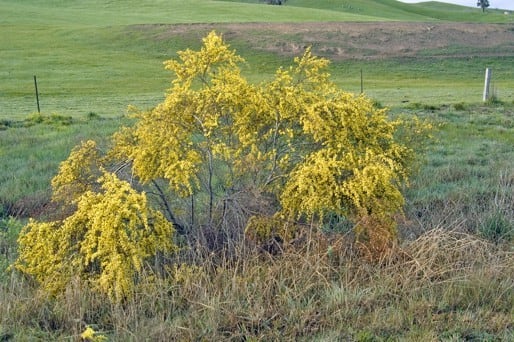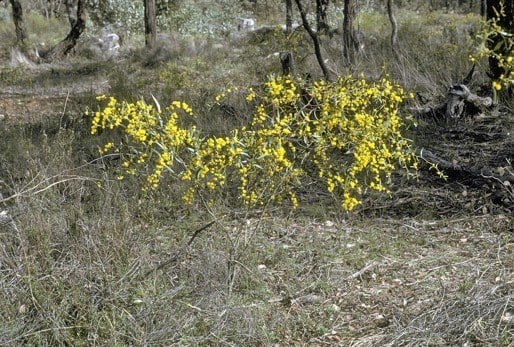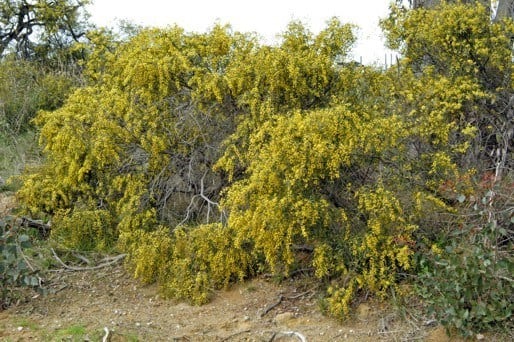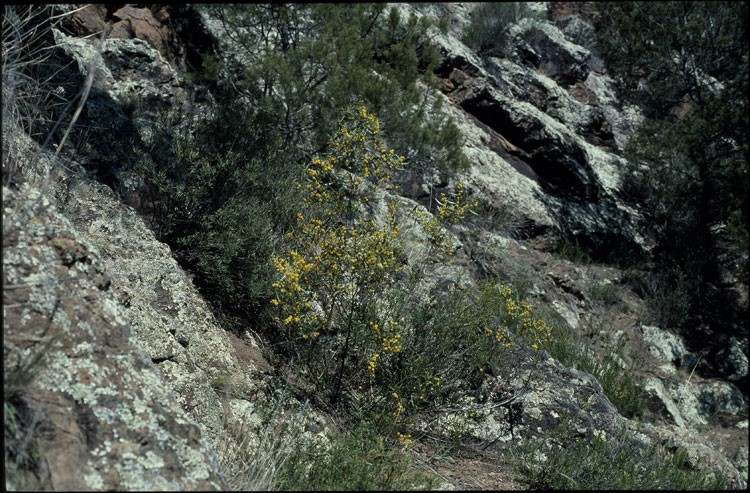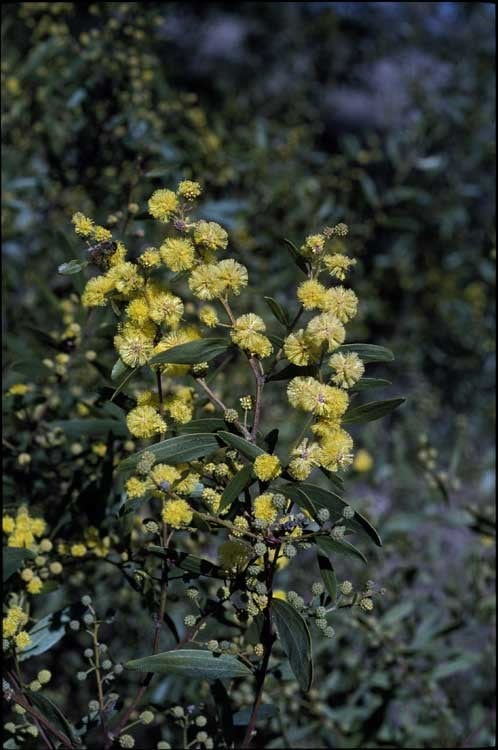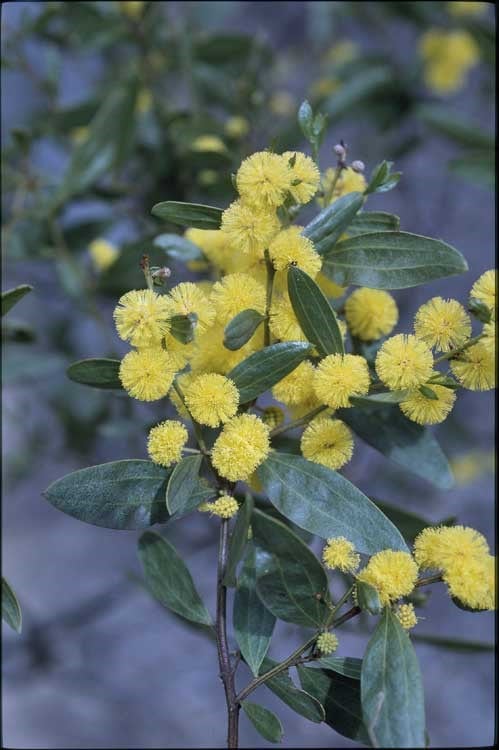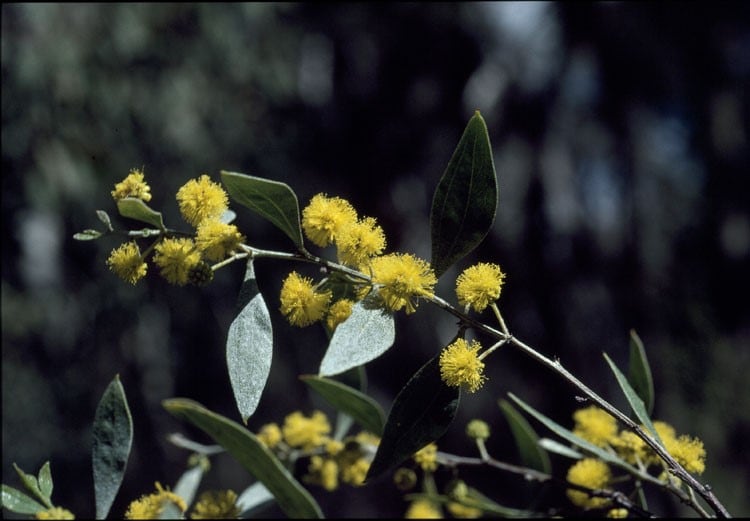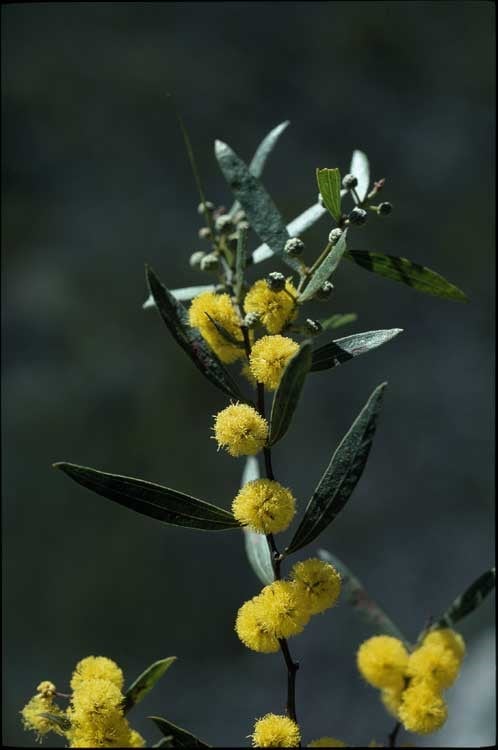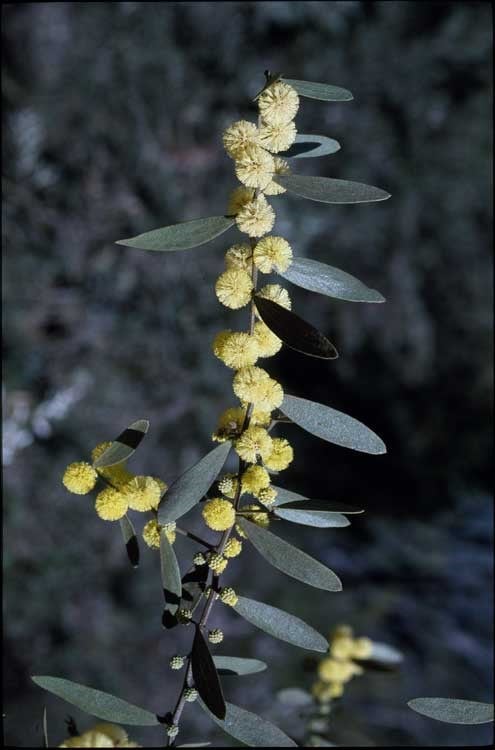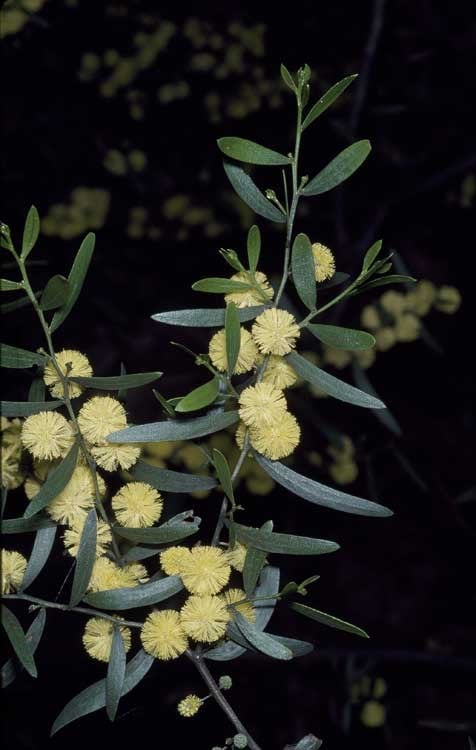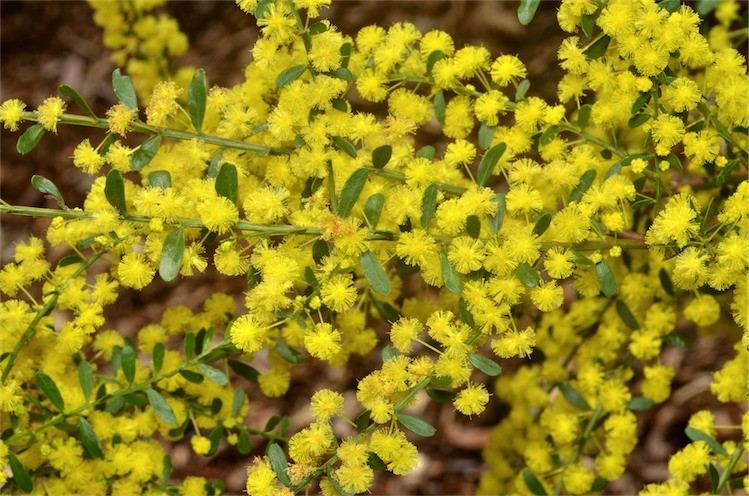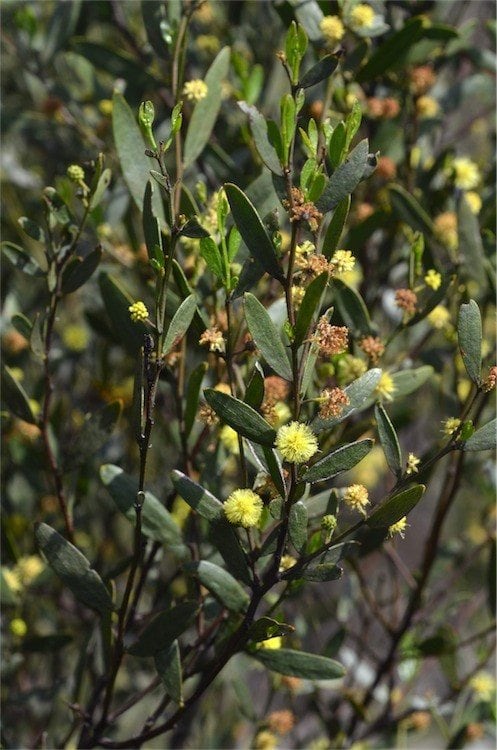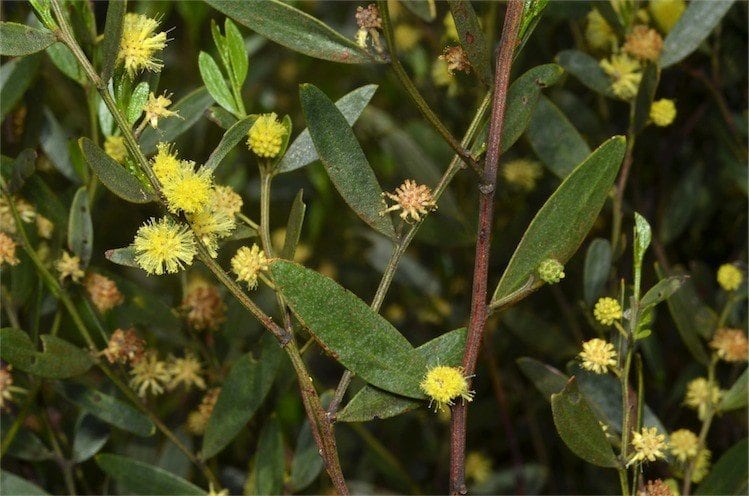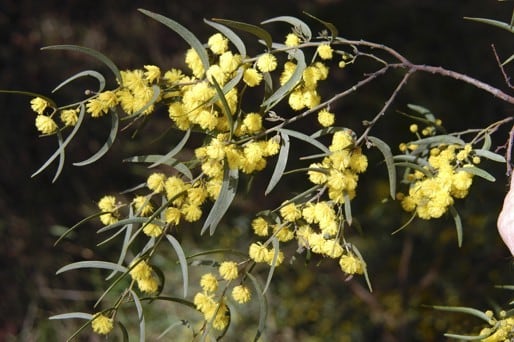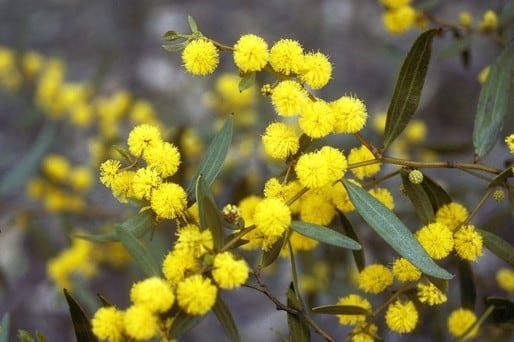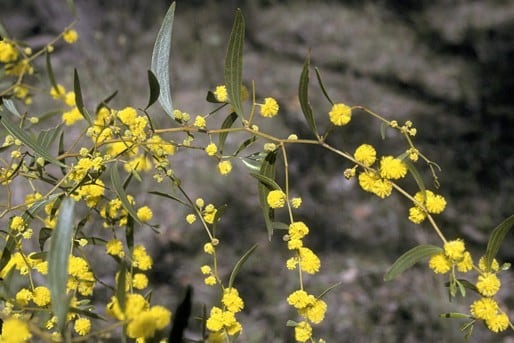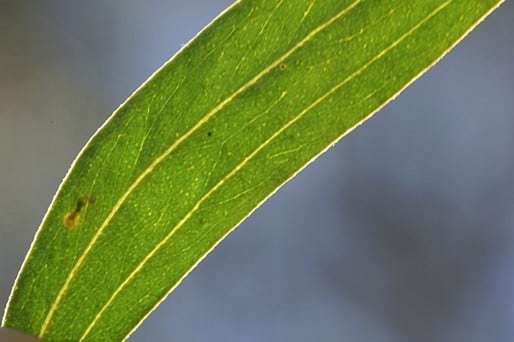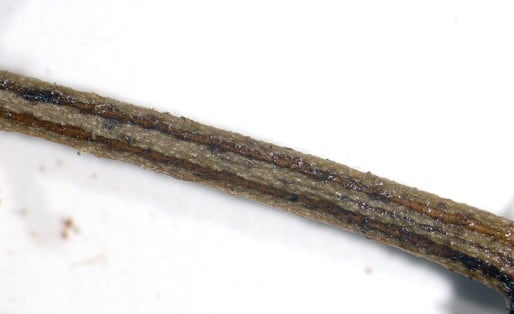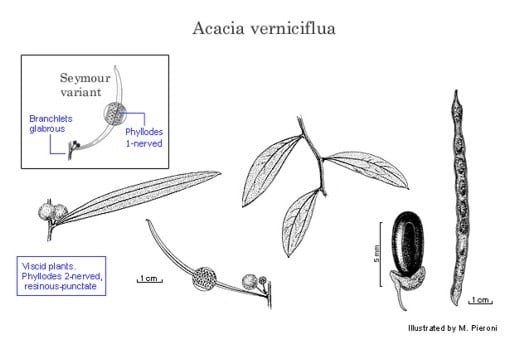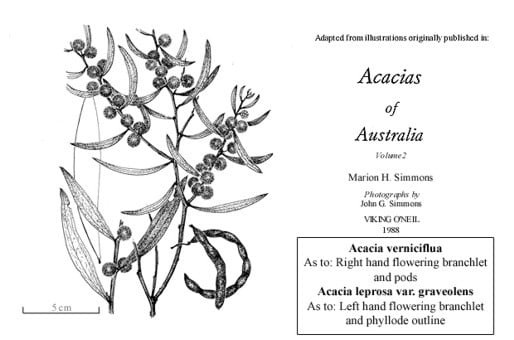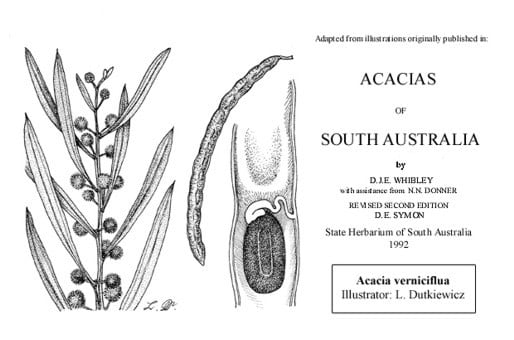Acacia verniciflua A.Cunn.
WATTLE
Acacias of Australia
Common Name
Varnish Wattle
Family
Fabaceae
Distribution
Widespread and common in eastern Australia from near Tamworth, N.S.W., S through the A.C.T. to Casterton, Vic.; there are also restricted occurrences in the Stanthorpe region of SE Qld and the southern Lofty Ra. area near Adelaide, S.A.
Description
Viscid, ±non-aromatic shrub mostly 1–3 m tall, occasionally tree to 4 m. Branchlets sometimes flexuose and/or pendulous, terete or slightly angled, glabrous or occasionally (few S.A. specimens) appressed-puberulous on ribs, normally marked with broad, ±flat, yellow or green bands which are darker coloured and often resinous in between. Phyllodes very variable, elliptic to narrowly elliptic, sometimes lanceolate, narrowly oblong to oblong-oblanceolate or rarely (when very narrow) linear, 2–8 (–9) cm long, (1.5–) 3–15 (–24) mm wide, thinly coriaceous, usually obviously resinous-punctate, glabrous or margins and main nerves appressed-puberulous, 2-nerved per face but adaxial nerve sometimes indistinct, rarely 1-nerved (in second variant below); lateral nerves absent or few and obscure; gland 0–2 mm above pulvinus. Inflorescences simple, 1–3 per axil, sometimes 2–6-headed racemes with axes 2–5 mm long; peduncles (3–) 4–15 (–20) mm long, often resinous, glabrous to sparsely appressed-hairy; basal peduncular bract normally caducous; heads globular to slightly obloid, 30–60-flowered, bright lemon yellow to golden. Bracteoles usually obscure and overtopped by flowers in mature buds (but see fourth variant below). Flowers 5-merous; sepals united almost to their apices. Pods narrowly oblong to linear, to 2.5–9 cm long, 3–6 mm wide, thinly coriaceous, glabrous. Seeds longitudinal, oblong to oblong-elliptic, 3.5–5 mm long, shiny, dark brown to blackish; aril terminal.
Habitat
Mostly occurs in Eucalyptus dominated woodland and grows in a wide range of habitats, from skeletal rocky areas to sand or loam soils derived from granites, sandstones and shales. Generally prefers slopes and rocky hillsides or the banks of watercourses, but is also frequently found in roadside remnants in degraded habitats.
FOA Reference
Data derived from Flora of Australia Volumes 11A (2001), 11B (2001) and 12 (1998), products of ABRS, ©Commonwealth of Australia
Author
Revised by B.R.Maslin
This identification key and fact sheets are available as a mobile application:
URL: https://apps.lucidcentral.org/wattle/
© Copyright 2018. All rights reserved.

